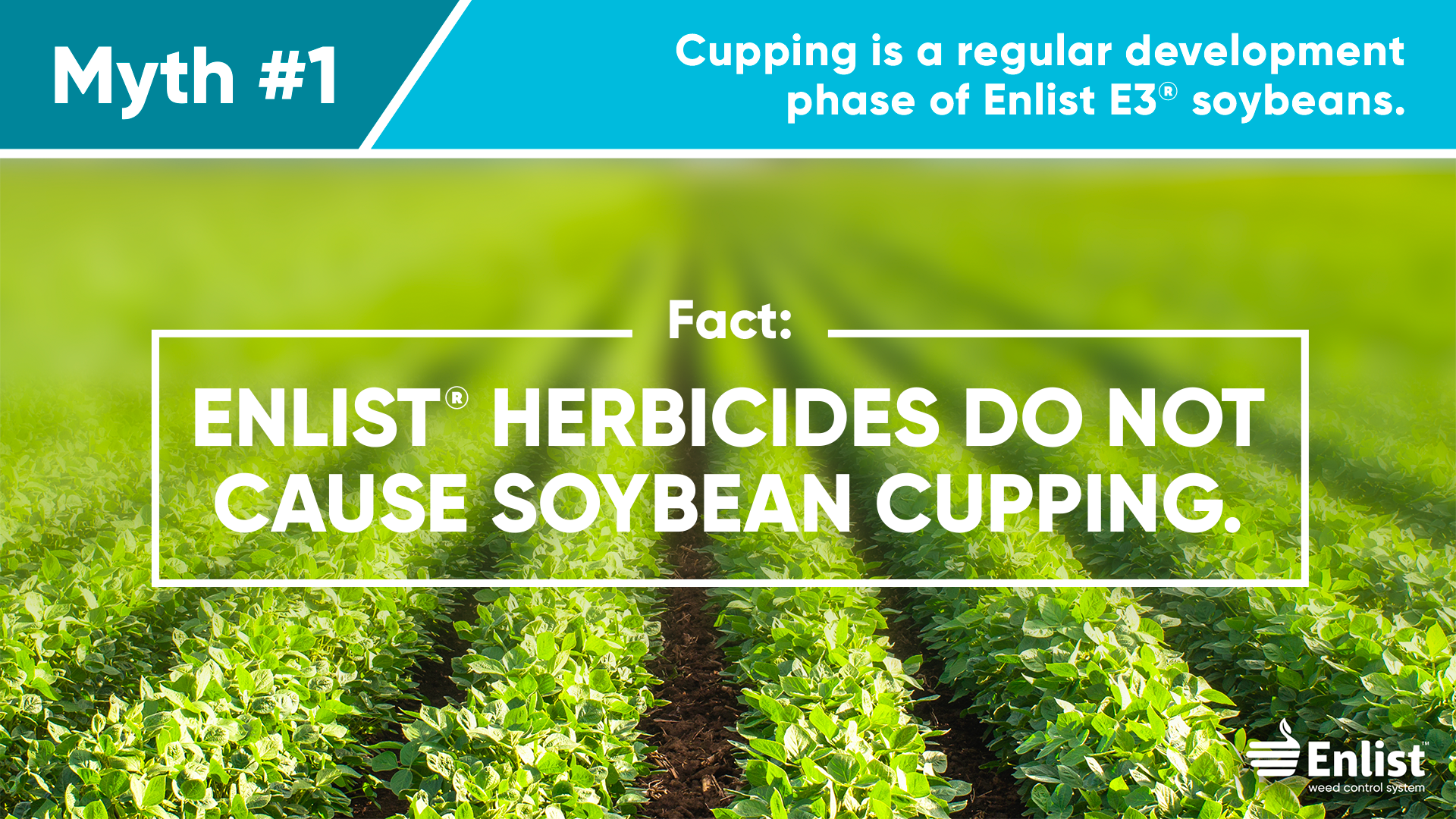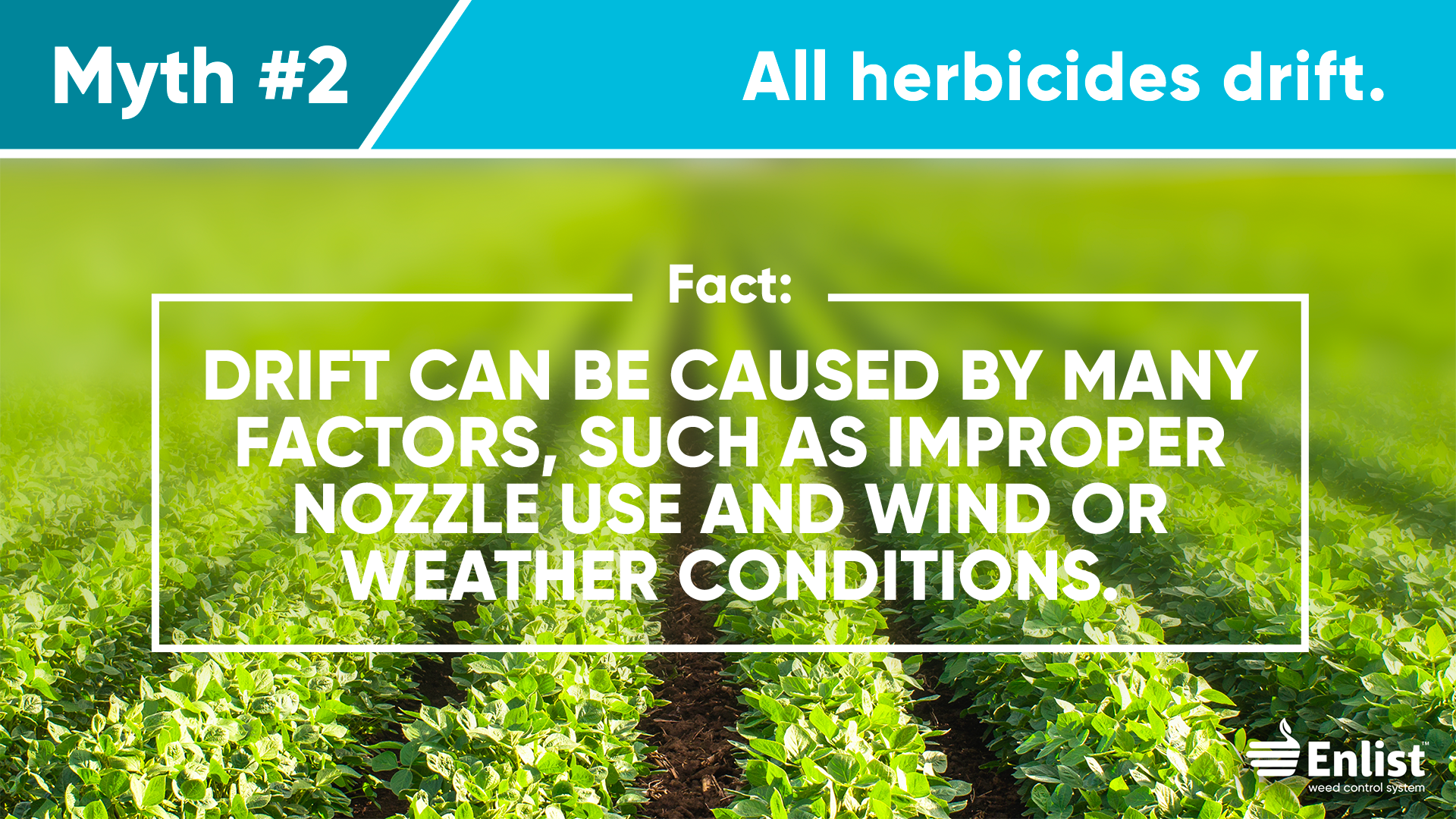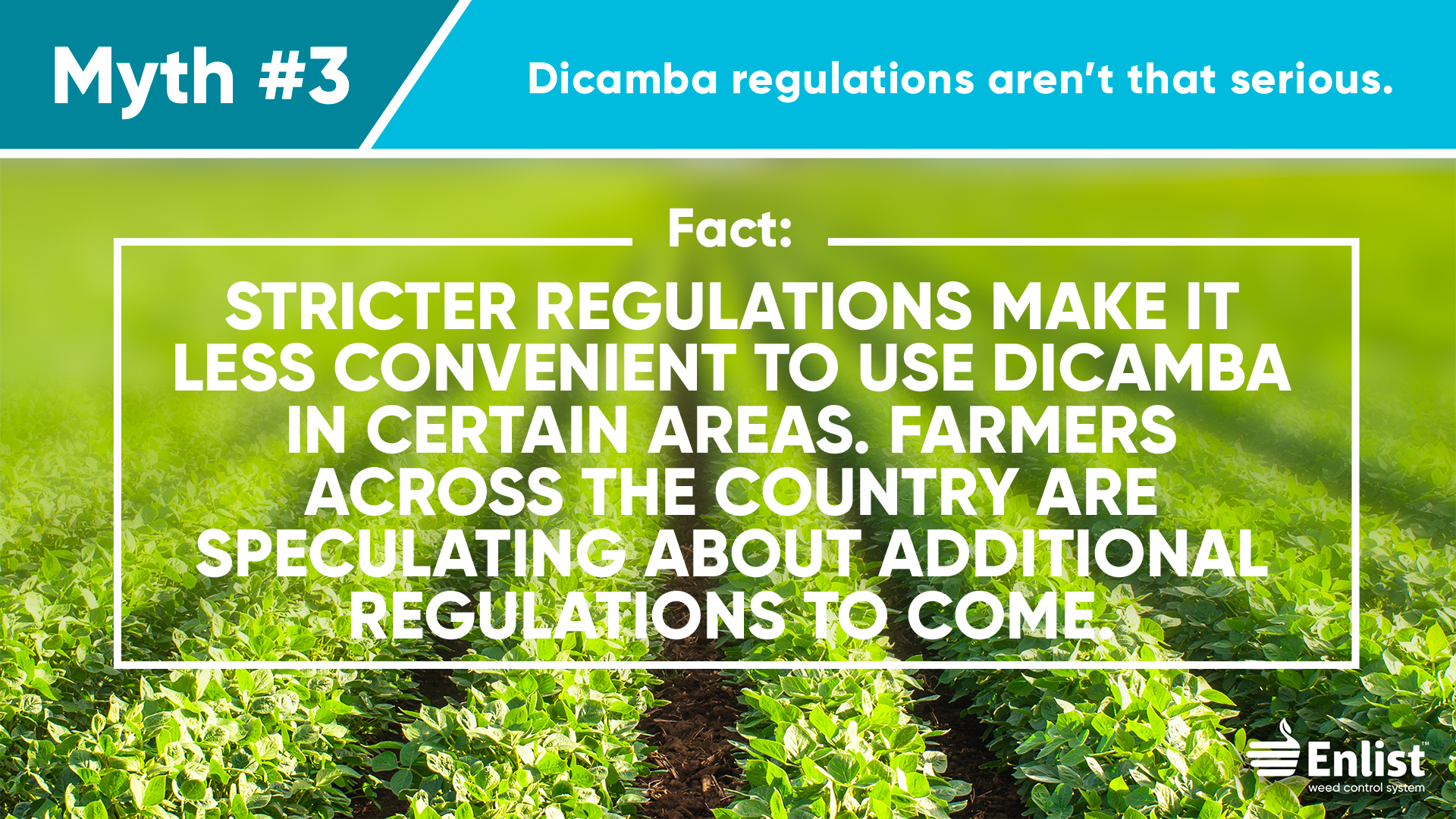Enlist® Weed Control System:
Fact vs. Fiction

Weed control decisions and investments are critical parts of every growing season and directly impact your bottom line. Unfortunately, there are a lot of myths, misconceptions and confusion around row-crop herbicides and the regulations some have.
Get the facts behind four common weed control myths.

Soybean cupping is a crop injury caused by dicamba drifting onto Enlist E3® soybeans or other soybeans not tolerant to dicamba. Soybeans without the dicamba-tolerant trait may show symptomology from dicamba exposure at less than 1/800 of the standard spray rate, according to crop sensitivity research from University of Georgia.
After an application of an Enlist® herbicide, Enlist E3 soybeans may see a temporary crop response. This “droop” or “sleepy” effect on the crop occurs while the plant is working to metabolize 2,4-D choline. It’s more likely to occur in conditions where the plant is stressed, including hot daytime temperatures and drought. The plants metabolize the 2,4-D choline and return to normal typically within 24 to 48 hours.

Not all herbicides are formulated in the same way. Some are more prone to drift than others. Enlist One® and Enlist Duo® herbicides are formulated with Colex-D® technology and proven to have near-zero volatility and less physical drift than dicamba when following label directions and using qualified nozzles.
Enlist Duo herbicide is 98% less volatile compared with a tank mix of BAPMA dicamba and glyphosate.

In February 2024, the U.S. Environmental Protection Agency (EPA) announced the three dicamba products previously approved for over-the-top use are no longer registered. The EPA also issued an existing stock order to authorize limited sale and distribution of existing stocks in 2024 that are already in the possession of persons other than the registrant.
Enlist herbicides, which are registered through January 2029, provide more flexibility for farmers with wide application windows and no calendar cutoff dates, unlike dicamba. Enlist herbicides also have more than 1,700 qualified tank-mix partners, no time-of-day application restrictions and a broad range of qualified nozzles, so farmers can find the right balance of coverage and drift control.

Farmers continue to battle resistant weeds, particularly those resistant to glyphosate. With flexible tank-mix options, farmers can use the most effective tank mix for their operation, including , to control those resistant weeds.
Purdue University conducted a seven-year study that showed using multiple modes of action in a fully diversified weed control program will reduce the weed seedbank and reduce the number of weed species — therefore, mitigating the evolution of herbicide resistance.
There are more than 1,700 qualified products — including herbicides, fungicides, insecticides and adjuvants — that farmers can tank-mix with Enlist One herbicide and applied over the top of soybeans, cotton and corn with the Enlist® trait for broad-spectrum weed control. Enlist herbicides also can be applied as preemergence and in burndown — with no plant-back restrictions for Enlist® crops.
To learn more about these myths, listen to the latest Brownfield Managing for Profit episode.
™ ® Colex-D, Enlist, Enlist Duo, Enlist E3 and Enlist One are trademarks of Corteva Agriscience and its affiliated companies. ®Liberty is a registered trademark of BASF. The transgenic soybean event in Enlist E3® soybeans is jointly developed and owned by Corteva Agriscience and M.S. Technologies L.L.C. Enlist Duo® and Enlist One® herbicides are not registered for sale or use in all states or counties. Contact your state pesticide regulatory agency to determine if a product is registered for sale or use in your area. Enlist Duo and Enlist One herbicides are the only 2,4-D products authorized for use with Enlist® crops. Consult Enlist® herbicide labels for weed species controlled. Always read and follow label directions.
Find expert insights on agronomics, crop protection, farm operations and more.